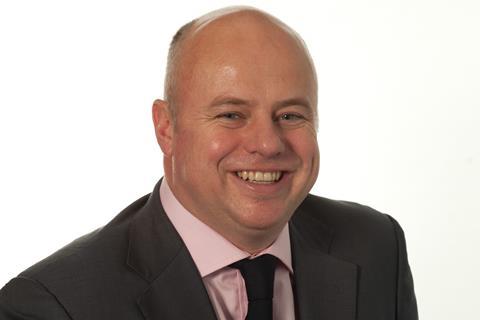Four industry leading lights discuss how insurance can remedy its poor public image
Phil Bayles, Aviva intermediaries managing director

We all know that insurance provides an essential service and underpins every aspect of daily life. But, we also know that for many of our customers, insurance is seen as a grudge purchase. It isn’t until they need to make a claim that they see the value of their cover, assuming they have the right cover to start with.
So, how can we, as an industry, change that poor image? We need to behave in a way that customers want and be consistent so they can feel confident we’ll do the right thing. We need to not only offer an exceptional claims service but also ensure we add value. It’s about harnessing our expertise to provide quality advice to help ensure customers have the right cover in place and avoid underinsurance.
It is also about offering access to the sorts of tools that can make a difference. Risk management is central to our strategy of prevent, protect and fix here at Aviva. We have been providing a number of innovative tools like thermal imaging, drones and leak detection to help prevent the bad things happening at all.
As an industry it is within our gift to improve our image by delivering on our promises and improving trust – we simply need to be consistent in our approach and put the customer at the heart of everything we do.

Gary Humphreys, Markerstudy group underwriting director
There are areas where the industry doesn’t do itself justice. We are not particularly good at getting good PR out there.
Take, for example, the awful Grenfell fire tragedy recently. Many of the big insurers who covered people in the tower block were onsite at the time helping people. That kind of thing tends to not get into the public domain. But the minute someone has a bad experience on a claim it tends to make the news. We are not very good at combating that.
Also, as an industry, we do shoot ourselves in the foot occasionally. The big one at the moment is dual pricing at renewal. It is very hard for the public to accept that people who aren’t loyal customers will potentially be provided with a better rate than people who are. If we were able to tackle that one issue, it would go a long way to clearing up some of the bad image that exists.
There are a lot of factors that the public do not really understand, such as what makes motor premiums increase. The government seems to be able to raise Insurance Premium Tax without any backlash from the public. But if insurance rates rise 4% or 5%, all hell breaks loose.
It is a tough one and I don’t think it is something we can achieve overnight, but if the industry made a concerted effort with little steps and maybe a more collaborative effort to improve the image then we could perhaps address some of these issues.
Organisations like the ABI are important in terms of being able to get a broad-brush message out there on behalf of a significant proportion of the market. Things like use of social media and app-based technology providing better service will all help improve the image, but education is going to be key. People do have to accept that in a changing world of increasing risks, premiums do rise.
There is a perception that all insurance companies make massive profits and are fat cats that are feeding off the public. But while certain parts of the market are relatively profitable, most people who follow the motor insurance market know that, more often than not, the majority of motor insurers lose money. That message never seems to get told or understood, and I do think we need to start educating people.
Matthew Connell, Chartered Insurance Institute policy and public relations director

The insurance industry does many things well – it pays out billions of pounds in claims, delivers excellent risk management expertise to its customers, and develops products to address new risks, such as cyber insurance.
And yet trust in insurance remains low – in surveys, it regularly rates below banks, supermarkets, and online retailers.
It’s not as if the industry isn’t competitive – home and motor insurers make modest profits, if any at all, and it is relatively easy for customers to switch insurers compared to other financial services and utilities.
The problem lies more around what insurers compete on. We know from behavioural economics that people value short-term benefits over long-term rewards. That means the best way to attract customers is to do away with as many short term barriers to purchase as possible – by reducing up-front premiums and by making the application process as painless as possible.
To win on convenience and up-front premiums, insurers often have to make compromises, such as raising premiums at renewal, reducing coverage to the bare essentials and cutting costs by keeping personal communication to a minimum.
However, when consumers eventually come to realise the compromises that have been made, they feel let down, and their trust in the whole sector takes a hit.
The solution isn’t easy, because it has to tackle the tendency we all have to value the short term above the long term.
What we need is a plan for the whole sector, bringing together consumer groups, regulators, charities, and the industry to create education for customers, a professional structure for the industry and to make sure that we are competing to create contented customers over the long term, not just willing purchasers in the short term.

Phoebe Hugh, Brolly chief executive
Firstly, insurers are often dealing with people going through traumatic experiences. If they get it wrong and make things even worse, this can make for a compelling media story. Secondly – and more importantly – the industry simply is not meeting customer expectations: the right cover, a fair price and the ease of experience to name just a few. People think they’re being screwed, and the reality is, many are.
We see a growing misalignment between people, products and providers. If you actually ask a customer what they want, it’s simple: to feel in control, to make informed decisions on what they’re buying, to know claims will be paid, and the comfort they’re not being ripped off on price. We’re using technology to fix a lot of the aspects of buying and managing insurance that just don’t work well for customers today, and have a very clear mission to create a world where insurance is fair, precise, effortless and eventually cheaper. Getting the public involved in building the kind of insurance company they actually want is a much better way to change the image of insurance.
One of the ways we do this at Brolly is publicly sharing our product roadmap, where customers can vote on features they want and propose ideas for what should come next.
We think customers should get wow moments when they interact with insurance. Something delightful that they weren’t expecting. There are so many moments in the customer journey that can be transformed. For instance, when customers download the Brolly app we give them the option to connect their email account, where our AI technology finds their existing insurance policies, which shortly after, start appearing in their Locker.
We believe in giving customers the opportunity to bring about change themselves by encouraging their involvement. In order for the public image to change, we must first force the industry to change.
What steps do you think the industry should take to improve its poor public image? Join the debate and get involved on Twitter. Tweet to @InsuranceTimes_ and use the hashtag #InsTimesQuestions
Hosted by comedian and actor Tom Allen, 34 Gold, 23 Silver and 22 Bronze awards were handed out across an amazing 34 categories recognising brilliance and innovation right across the breadth of UK general insurance.














































No comments yet